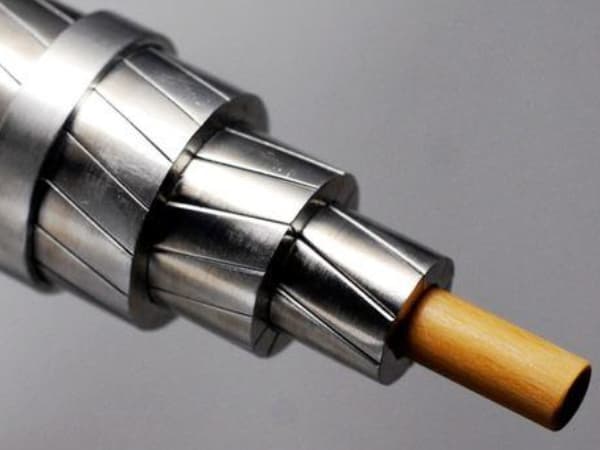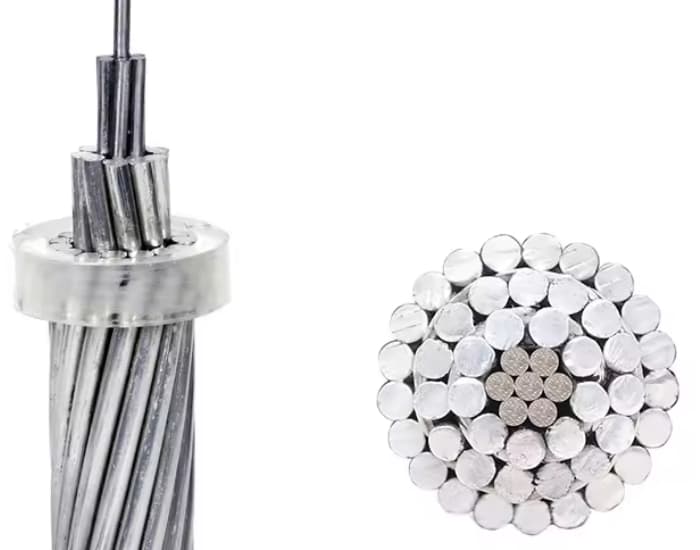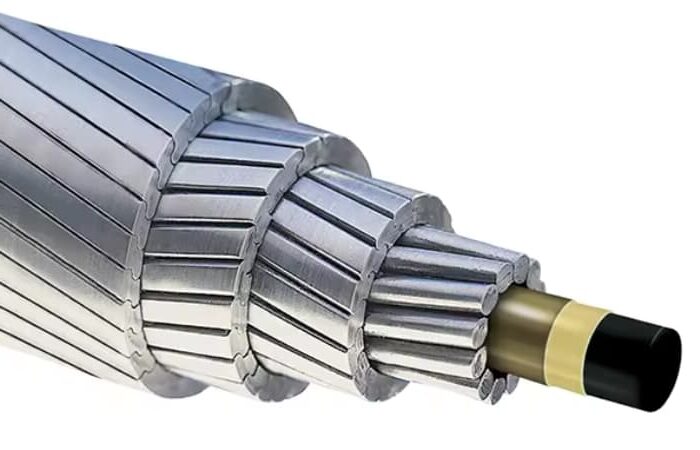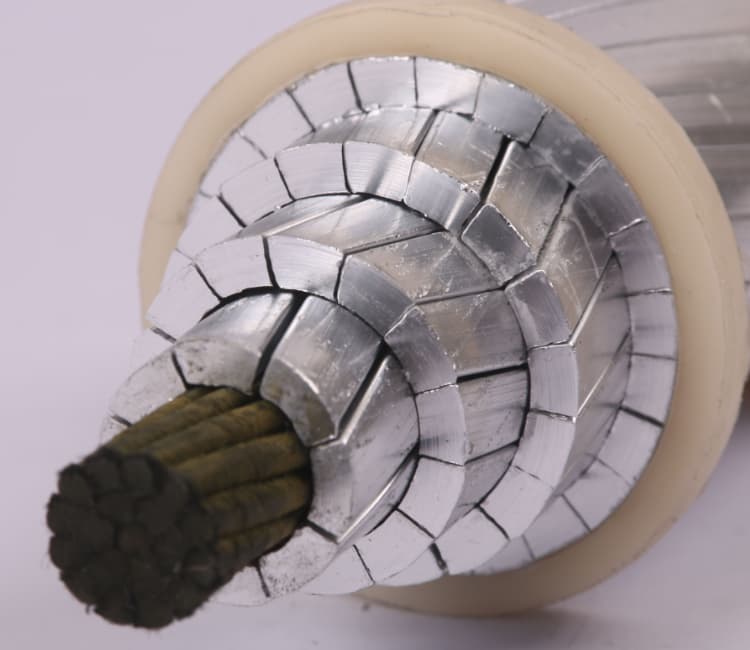
Введение
В развивающейся сфере передачи энергии, Выбор правильного типа проводника имеет решающее значение для эффективности, экономическая эффективность, и надежность сетки. Двумя наиболее широко используемыми проводниками в электротехнической промышленности являются: АССК (Алюминиевый проводник с композитным сердечником) проводники и АКСР (Алюминиевый проводник, армированный сталью) проводники. Хотя оба служат одной и той же фундаментальной цели, их структурный состав, ТТХ, и приложения существенно различаются.
В этой статье представлено подробное сравнение между Проводники ACCC против. ACSR-проводники, анализ их преимуществ, недостатки, технические характеристики, и идеальные варианты использования. Являетесь ли вы инженером, поставщик коммунальных услуг, или профессионал отрасли, понимание этих различий поможет вам принять обоснованное решение в отношении ваших потребностей в передаче энергии..
Что такое проводник ACCC?
АССК Дирижер (Алюминиевый проводник с композитным сердечником) представляет собой усовершенствованный воздушный проводник, в котором вместо традиционного стального сердечника используется композитный сердечник из углеродного волокна.. Этот легкий, высокопрочный композитный материал значительно повышает эффективность проводника, пропускная способность, и механическая прочность.
Основные характеристики проводников ACCC:
- Композитное ядро: Изготовлен из углеродного и стеклянного волокна., обеспечивает высокую прочность на разрыв и низкое тепловое расширение..
- Алюминиевые пряди: Алюминиевые жилы с высокой проводимостью снижают электрическое сопротивление..
- Уменьшенное провисание: Благодаря своему легкому характеру, ACCC испытывает меньший температурный прогиб, обеспечение лучшего клиренса.
- Более высокая амбальность: Может выдерживать вдвое большую текущую емкость по сравнению с ACSR..
- Повышенная коррозионная стойкость: Композитный сердечник предотвращает окисление и ржавчину., что делает его идеальным для прибрежных и промышленных условий.

Что такое проводник ACSR?
АКСР (Алюминиевый проводник, армированный сталью) является одним из наиболее распространенных типов воздушных проводов, используемых в сетях передачи и распределения электроэнергии.. Он состоит из стального сердечника, окруженного алюминиевыми нитями., сочетание проводимости алюминия с прочностью стали.
Основные характеристики проводников ACSR:
- Стальной сердечник: Обеспечивает механическую прочность и предотвращает чрезмерное провисание..
- Алюминиевые пряди: Обеспечьте эффективную проводимость при сохранении легкой конструкции..
- Умеренная пропускная способность: Подходит для стандартных линий передачи, но имеет более высокое электрическое сопротивление, чем ACCC..
- Более высокое тепловое расширение: Более склонен к провисанию при высоких температурах по сравнению с ACCC..
- Экономичный: Более низкая первоначальная стоимость, что делает его широко используемым вариантом в различных приложениях..
Проводник ACCC против проводника ACSR : Сравнительный анализ
| Особенность | АССК Дирижер | ACSR проводник |
|---|---|---|
| Основной материал | Композит из углеродного волокна | Сталь |
| Проводимость | Более высокая проводимость, более низкое сопротивление | Умеренная проводимость, более высокое сопротивление |
| Мощность (Текущая емкость) | До 2 раз больше, чем ACSR | Стандартная емкость |
| Термический прогиб | Низкое провисание благодаря легкому сердечнику | Повышенное провисание при тепловом стрессе |
| Линейные потери | До 40% ниже, чем ACSR | Более высокие потери из-за электрического сопротивления |
| Устойчивость к коррозии | Высокий (устойчив к окислению и коррозии) | Умеренный (подвержен коррозии со временем) |
| Долговечность | Более длительный срок службы, минимальный износ | Требует регулярного обслуживания |
| Стоимость установки | Более высокие первоначальные затраты, но долгосрочная экономия | Более низкие первоначальные затраты, но более высокие долгосрочные затраты |
Преимущества проводников ACCC
- Более высокая эффективность и более низкие потери в линии
- Проводники ACCC значительно снижают потери в электрической линии., что приводит к снижению потерь энергии и экономии затрат для коммунальных предприятий..
- Повышенная пропускная способность по току
- Благодаря своей передовой конструкции, Проводники ACCC могут выдерживать вдвое большую силу тока, чем проводники ACSR, не требуя дополнительных опор электропередачи или модернизации линий..
- Минимальное провисание и улучшенный клиренс
- Композитный сердечник обеспечивает лучшую устойчивость к провисанию., обеспечение достаточного дорожного просвета и минимизация рисков безопасности.
- Более длительный срок службы и низкие эксплуатационные расходы
- Проводники АССС устойчивы к механическому износу., коррозия, и усталость, что делает их идеальными для суровых условий окружающей среды.
- Поддерживает интеграцию возобновляемых источников энергии
- С развитием ветровой и солнечной энергии, Проводники ACCC обеспечивают более эффективную передачу на большие расстояния., поддержка инициатив по модернизации сетей.
Преимущества проводников ACSR
- Более низкая первоначальная стоимость
- Проводники ACSR, как правило, более доступны для покупки и установки., что делает их привлекательным вариантом для проектов с ограниченным бюджетом..
- Проверенная производительность в стандартных приложениях
- ACSR используется на протяжении десятилетий и остается надежным для стандартных сетей передачи и распределения..
- Высокая механическая прочность
- Стальной сердечник обеспечивает надежность, позволяющие проводникам ACSR выдерживать высокие механические нагрузки и неблагоприятные погодные условия.
- Широко доступен
- Благодаря своей долгой истории и налаженным производственным процессам, ACSR доступен в различных размерах и конфигурациях по всему миру..

Применение проводников ACCC и ACSR
Лучшие приложения для проводников ACCC:
- Модернизация существующих линий электропередачи: Когда необходимо увеличение мощности без серьезных изменений инфраструктуры.
- Проекты возобновляемой энергетики: Содействие эффективной передаче энергии ветра и солнца на большие расстояния..
- Городские районы и районы с высокой плотностью населения: Там, где минимизация потерь в линии и поддержание зазора имеют важное значение.
- Суровые условия: Прибрежный, промышленный, или экстремальные погодные условия, где устойчивость к коррозии является приоритетом.
Лучшие применения проводников ACSR:
- Стандартное распределение мощности: Подходит для обычных линий электропередачи, где не требуется исключительная эффективность..
- Проекты сельской электрификации: Предоставление экономически эффективных решений для расширения электросети в удаленных местах..
- Условия высоких механических нагрузок: Промышленные зоны, где проводник должен выдерживать тяжелые механические нагрузки..
- Временные или аварийные установки: Быстрое развертывание благодаря доступности и простоте установки.
Экологическое и экономическое воздействие
Почему коммунальные предприятия переходят на ACCC Conductor?
- Правительства и коммунальные компании все больше внимания уделяют энергоэффективности и устойчивому развитию..
- Сокращение потерь в линии с помощью проводников ACCC приводит к снижению выбросов CO₂., помогая странам достичь своих целей по сокращению выбросов углекислого газа.
- Хотя изначально дороже, Проводники ACCC со временем окупаются за счет снижения затрат на техническое обслуживание и экономии энергии..
Почему некоторые компании до сих пор используют проводник ACSR?
- Первоначальная стоимостьПроводники АССС может быть непомерно дорогим для небольших проектов.
- Проводники ACSR по-прежнему хорошо работают в стандартных приложениях и остаются жизнеспособным вариантом, когда эффективность не является критическим вопросом..

Заключение: Какой проводник подойдет именно вам?
Выбор между Проводники ACCC и ACSR зависит от конкретных потребностей вашего проекта, бюджет, и долгосрочные цели. Если ваш приоритет — высокая эффективность, снижение потерь, и долгосрочная экономия затрат, затем Проводники АССС являются идеальным выбором. Однако, если вам нужна экономичная, проверенное решение для стандартных приложений, Проводники ACSR все еще могут быть жизнеспособным вариантом.
По мере модернизации электросетей и увеличения спроса на энергию, Проводники ACCC быстро становятся отраслевым стандартом для передачи энергии нового поколения.. Инвестиции в проводники ACCC сегодня могут привести к большей экономии энергии., повышенная надежность сети, и более устойчивая энергетическая сеть для будущего.

